EUROPEAN UNION
About the EU
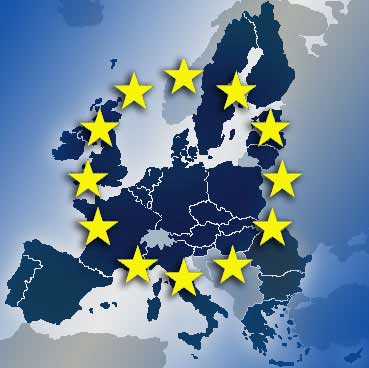 The European Union is a unique structure that does not fall into any other traditional legal category. From a historical perspective, its political system is unique and has continuously developed over a period of more than 50 years. The countries that make up the EU (its ‘member states’) delegate some of their decision-making powers to shared institutions they have created, so that decisions on specific matters of joint interest can be made democratically at European level.
The European Union is a unique structure that does not fall into any other traditional legal category. From a historical perspective, its political system is unique and has continuously developed over a period of more than 50 years. The countries that make up the EU (its ‘member states’) delegate some of their decision-making powers to shared institutions they have created, so that decisions on specific matters of joint interest can be made democratically at European level.
The term European Union was introduced with the Treaty on European Union (Maastricht Treaty), that came into force on 1 November 1993. It replaced the three legal integration structures of the Western European countries: European Economic Community EEC, European Coal and Steel Community ESCS and European Atomic Energy Community.
The process of European integration now affects the whole continent, which, in turn, is part of a rapidly and radically changing world that needs to find new stability.
Sustainable development, population trends, economic dynamism, social solidarity and an ethical response to progress in the life sciences are issues that can no longer be effectively dealt with at national level.
The 21st century offers brighter future, but it still faces Europe with new challenges and difficulties. Any European country can join the EU, provided it has a stable democracy that guarantees the rule of law, human rights and the protection of minorities. It must also have a functioning market economy and a civil service capable of applying EU laws in practice. The enlargement of the EU has strengthened democracy. It has made Europe safer and increased its potential for economic growth and trade. The EU institutions have proved their worth, but they must be adapted to cope with the enlargement of the Union and the increasing number of tasks for which it is responsible. Any definitive change in the present system must ensure plurality and respect the differences that are the most precious assets of Europe’s nations. Reforms must also concentrate on the decision-making process.
Since 1 July 2013, the European Union has 28 members and over half a billion people.
Cooperation among member states is based on free movement of goods, services, people and capital, with no customs barriers or other restrictions. This was made possible with the creation of the Single Market. Member states cooperate in other areas, as well - environment, agriculture, fight against organized crime.
The decision to set up an area without internal frontiers known as the Schengen Area was one of the most important moves to make life easier for travellers in the European Union. It abolished all checks on people, regardless of nationality, at their shared borders, harmonised controls at their borders with non-EU countries and introduced a common policy on visas. The Schengen information system (SIS) is a complex database which enables police forces and judicial authorities to exchange information on people for whom an arrest warrant or extradition request has been issued, and on stolen property such as vehicles or works of art.
The main challenge for the EU is to take effective action to ensure the safety and security of its members. In order to deal with this challenge, the EU has been developed a genuine common European security and defence policy, enabling it to act globally as a power of stability, cooperation and understanding.
About half of the EU member states are part of the European Monetary Union and have introduced the common currency euro. The other countries are either not part of the Monetary Union or have still not fulfilled the convergence criteria.
A member state must not favour its products or services - goods or services have to be purchased and sold under equal circumstance throughout the EU. Therefore, the EU has single customs tariff and trade policy.
The aims of the Common Agricultural Policy are competitive agriculture and production of healthy food. Large part of the EU Budget is spent on the agricultural policy.
Agriculture, forestry and rural development are crucial for ensuring sustainable exploitation of land and natural resource management in the European rural areas. The strengthening of EU rural development policy has become an overall EU priority.
EU has common regulations in the areas of environment protection, citizens health care and sustainable use of natural resources.
Through cooperation among the customs, police and public prosecution authorities in the member states, joint action is ensured in the fight against international organized crime. Common rules apply in the fight against terrorism, trade in drugs and child pornography.
The main objective of the common immigration policy is to improve management in the area of migration by adopting harmonised rules and common approach, while taking into consideration the economy and demographics of the EU.
EU institutions
The European Union is a unique structure that does not fall into any other traditional legal category. From a historical perspective, its political system is unique and has continuously developed over a period of more than 50 years. The countries that make up the EU (its ‘member states’) delegate some of their decision-making powers to shared institutions they have created, so that decisions on specific matters of joint interest can be made democratically at European level. The policies and laws are produced by an ‘institutional triangle’ which includes: the European Parliament (EP) which represents the EU’s citizens, the Council of the European Union, which represents the national governments and the European Commission, an independent body which which seeks to uphold the interests of the Union as a whole.
The Council of the European Union
The Council of the European Union:
- adopts legislative acts (Regulations, Directives, etc.) in "co-decision" with the European Parliament;
- helps in the coordination of the Member States' policies;
- develops the common foreign and security policy, on the basis of strategic guidelines set by the European Council;
- concludes international agreements on behalf of the Union;
- it adopts the budget of the EU, together with the European Parliament.
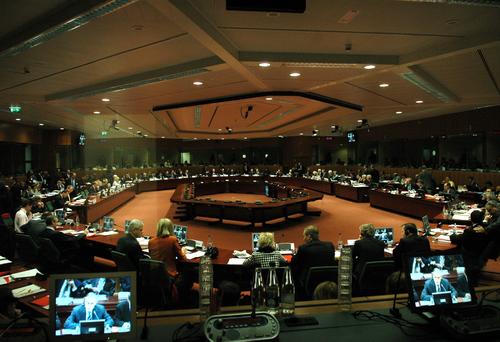 The Council is located in Brussels, where it meets several times a month. Council`s meetings are held in Luxembourg in April, June and October.
The Council is located in Brussels, where it meets several times a month. Council`s meetings are held in Luxembourg in April, June and October.
The Council of the European Union is a single body; it meets in different "configurations", which are attended by the Ministers from the Member States and the European Commissioners responsible for the areas concerned. In the 1990s there were 22 configurations. The number of configurations was reduced to 16 in June 2000 and then to 9 in June 2002. Since the entry into force of the Treaty of Lisbon on 1 December 2009, there are ten configurations of the Council. All Council meetings are chaired by the relevant minister of the country holding the rotating EU presidency. since the entry into force of the Treaty of Lisbon, the Foreign Ministers’ Council has a permanent chairperson – the EU's High Representative for Foreign and Security Policy.
Decisions in the Council of the EU are adopted with a qualified majority as a general rule. A qualified majority is reached when a majority (sometimes even two thirds) of the 27 EU countries vote in favour; that is at least 255 of the total of 345 votes. From 2014 a system of 'double majority voting' will be introduced. For a proposal to go through, it will need the support of 2 types of majority: a majority of the countries (at least 15) and a majority of the total EU population (the countries in favour must represent at least 65% of the EU population).
The overall work of the Council is prepared or co-ordinated by the Permanent Representatives Committee (COREPER), comprised of permanent representatives of the Member States working in Brussels and their assistants.
The Presidency of the Council
The EU Member States take it in turn to chair the Council for a period of six months, during this period; the Presidency chairs meetings, proposes guidelines and draws up the compromises needed for the Council to take decisions. In order to maintain the continuity of Council work, the six-monthly presidencies work together closely in groups of three-Presidency teams and draw up a joint programme of Council work for an 18-month period.
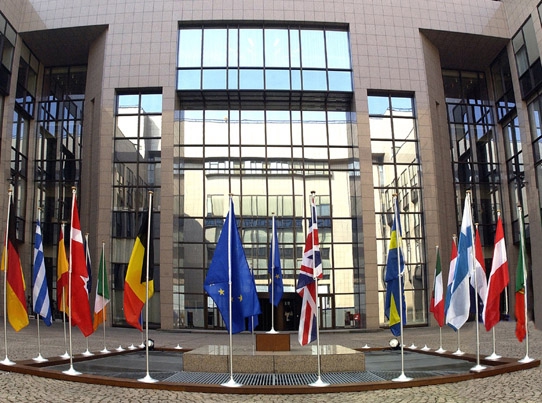
The European Council
The European Council defines the general political direction and priorities of the European Union. With the entry into force of the Treaty of Lisbon on 1 December 2009, it became one of the seven institutions of the Union. The European Council meets twice every six months, usually in Brussels.
Its President is Herman Van Rompuy. The President's term of office is two and a half years, renewable once.
According article 15 of the Treaty on European Union (the first part of the Treaty of Lisbon), the European Council provides the Union with the necessary impetus for its development and defines the general political directions and priorities thereof. It does not exercise legislative functions.
The European Council consists of the Heads of State or Government of the Member States, together with its President and the President of the Commission. The High Representative of the Union for Foreign Affairs and Security Policy takes part in its work.
Except where the Treaties provide otherwise, decisions of the European Council are taken by consensus. In some cases, it adopts decisions by unanimity or by qualified majority. The European Council elects its President by qualified majority.
The European Council was created in 1974 with the intention of establishing an informal forum for discussion between Heads of State or Government. It acquired a formal status in the 1992 Treaty of Maastricht, which defined its function as providing the impetus and general political guidelines for the Union's development.
The European Parliament
The European Parliament is the only body which is directly elected by the European Union. Together with the Council, the European parliament is one of the main institutions of EU for adoption of legislation. The work of the European Parliament is important since the decisions on new European laws in many policy areas,are made jointly by Parliament and the Council of Ministers which represent Member States.
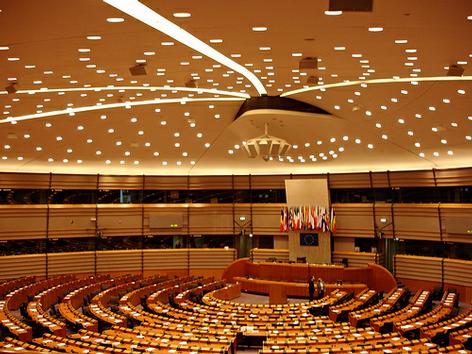 The three main roles of the European Parliament are:
The three main roles of the European Parliament are:
- To debate and pass European laws- with the Council
- To scrutiny other EU institutions in order to ensure that they are working democratically,
- To debate and adopt the budget of EU- with the Council.
The European Parliament plays an active role in drafting legislation in many areas such as: environmental protection, free movement of workers, capital, services and goods consumer rights, equal opportunities, transport. In some areas, such as the area of consumer protection and the environment, the Parliament works together with the Council to decide on the content of EU laws and adopt them. This process is called 'co-decision'.
In accordance with the Lisbon Treaty, the range of policies covered by co-decision process has increased, giving the Parliament more power to influence the content of laws in areas including energy policy, agriculture, immigration and EU funds. Parliament must also give a permission for other important decisions, such as allowing new countries to join the EU.
The European Parliament influences other European institutions in several ways. When a new Commission is appointed, its 27 members cannot take up office until they receive Parliament’s approval. If the Members of the European Parliament disapprove of a nominee, they can reject the entire slate.
The Parliament scrutinizes the Commission by examining its reports and by questioning Commissioners, area in which committees have an important role. Members of the European Parliament review petitions from citizens and set up inquiry committees. The Parliament must provide opinion on the topics of the European Council summits of national leaders’ agenda.
The Parliament and the Council adopt the annual budget of the European Union. A special Committee of the Parliament monitors the manner on which the budget is spent, and every year adopts and opinion on the Commission's handling of the previous year's budget.
The 736 Members of the European Parliament who represent the citizen have a five years mandate and are elected by the voters of the 27 Member States of the EU. The Members of the European Parliament are grouped by political affiliation, not by nationality.
The European Parliament has offices in: Brussels, Luxembourg and Strasbourg. Plenary sessions of the Parliament are scheduled in Strasbourg and Brussels; committee meetings are held in Brussels and the General Secretariat – the administrative offices are located in Luxembourg.
The European Commission
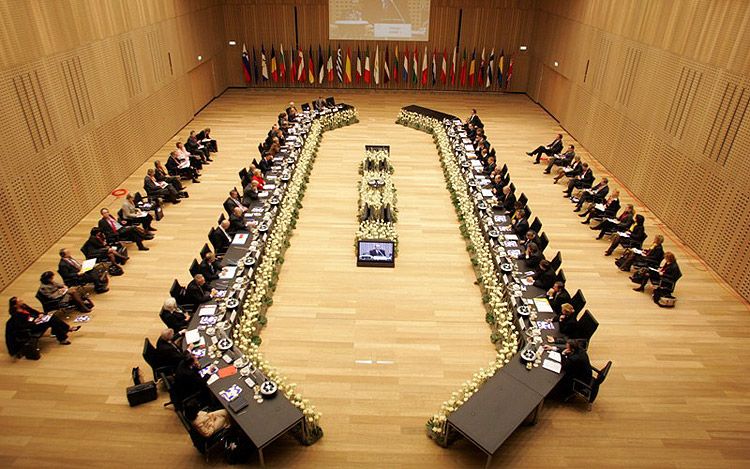
The European Commission is one of the main institutions of the European Union, is the EU's executive body which represents and upholds the interests of the EU as a whole. Commission drafts European laws, manages the activities for implementation of the EU policies and spending EU funds.
The Commission oversees and implements EU policies by:
- proposing new laws to Parliament and the Council,
- managing the EU's budget and allocating funding,
- enforcing EU law, together with the Court of Justice of the EU,
- representing the EU internationally.
The European Commission is comprised of 27 Commissioners, one from each Member State of EU. Each Commissioner is assigned for specific policy areas by the President.
The President of the Commission is nominated by the European Council. The nomination of all Commissioners and the President is subject of approval by the European Parliament, which is authorized to dismiss the Commission.
The Commission has the right of initiative; it can propose new laws in order to protect the interests of the EU and its citizens. As guardian of the Treaties, the Commission checks whether each member country is applying the EU law properly.
The Council and Parliament, together with the Commission set broad long-term spending priorities in the financial framework of EU. The Commission also drafts an annual budget, which is approved by Parliament and the Council. The Commission supervises the manner of which the EU funds are spent by the agencies, the national and the regional authorities and also manages funding for EU policies and programmers The European Court of Auditors scrutinizes the Commission’s management of the budget.
The Commission speaks on behalf of all EU countries in international bodies and negotiates international agreements for the EU.
The Commission is located in Brussels and Luxembourg. It has offices in each Member State of EU and delegations in every capital of the states around the world.
The Court of Justice
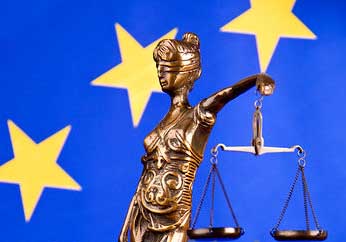
The Court of Justice of the European Union was established in 1952. Its mission is to ensure that "the law is observed" "in the interpretation and application" of the Treaties.
The Court of Justice of the European Union reviews the legality of the acts of the institutions of the European Union, ensures that the Member States comply with obligations under the Treaties, and upon a request of the national courts and tribunals interprets the Acquis Communautaire.
The Court constitutes the judicial authority of the European Union. In cooperation with the courts and tribunals of the Member States, the Court ensures the single application and interpretation of Acquis Communautaire. The Court of Justice interprets EU laws in order to insure its application in the same manner in all Member States. It also settles legal disputes between EU governments and EU institutions. Individuals, companies or organisations can also bring cases before the Court if they consider that their rights have been violated by any EU institution.
The Court of Justice of the European Union is located in Luxembourg and consists of three courts: the Court of Justice, the General Court (established in 1988) and the Civil Service Tribunal (established in 2004).
The Court of Justice is comprised of one Judge from each Member State of EU, who are assisted by eight advocates-general whose job is to present opinions on the cases brought before the Court. The Judges and advocate-generals have a six years mandated and they can be re-elected on these positions.
The Court of Auditors
The European Court of Auditors, upon the Treaty of Maastricht, is recognised as one of the institutions of the European Union, which carries out the audit of EU finances. This court was established in 1975 and is located in Luxembourg.
As the external auditor of the EU, the European Court of Auditors contributes to improving EU financial management and acts as an independent guardian of the financial interests of the citizens of the Union.
The Court reviews and examines whether financial operations have been properly recorded and disclosed, legally and regularly executed and managed in order to ensure economy, efficiency and effectiveness.
The European Commission, the European Parliament, the Council as well as the Member States use the results of the Court’s work for improvement of the financial management of the EU budget. The Court promotes accountability and transparency and assists the European Parliament and Council in overseeing the implementation of the EU budget.
One of the Court's most important functions is to submit an annual report on the previous financial year to the European Parliament and to the Council. Before deciding whether or not to approve the way in which the Commission has handled the budget the European Parliament examines the Court’s report in details.
The Court is comprised of one member from each Member State of EU, appointed by the Council. The mandate of the members is 4 years. If auditors discover fraud or irregularities they shall inform the European Anti-Fraud Office-OLAF.
Other EU institutions and bodies
The European Economic and Social Committee
Founded in 1957 under the Treaty of Rome, the European Economic and Social Committee (EESC) is a consultative body that gives representatives of Europe’s interest groups, such as employer organisations and trade unions, and other ‘organised civil society’ bodies, such as consumer associations, a formal platform to express their points of views on EU issues.
The members are nominated by the EU governments but they work in complete political independence. They are appointed for four years, and may be reappointed.
The Committee meets in plenary assembly, and its discussions are prepared by six subcommittees known as ‘sections’, each dealing with particular policy areas. It elects its President and two Vice-Presidents for a two-year term.
The Committee’s opinions are forwarded to the larger institutions — the Council, the Commission and the European Parliament. It must be consulted before decisions are taken on economic and social, regional and environment policy. It thus has a key role to play in the Union’s decision-making process. The EESC is a bridge between the Union and its citizens, promoting a more participatory, more inclusive and therefore more democratic society in Europe.
The Committee is based in Brussels.
The Committee of the Regions
The Committee of the Regions (CoR) was established under the Treaty on European Union and consists of representatives of regional and local government proposed by the member states and appointed by the Council for a four-year term. Under the Treaty, the Council and Commission must consult the CoR on matters of relevance to the regions, and it may also issue opinions on its own initiative.
The members of the Committee are elected members of, or key players, in local or regional authorities in their home region. They are nominated to the Committee by the national governments and appointed by the Council of the European Union for four years. Each country chooses its members in its own way, but the delegations all reflect the political, geographical and regional/local balance in their member state.
The role of the Committee of the Regions is to put forward the local and regional points of view on EU legislation. It does so by issuing reports, or ‘opinions’, on Commission proposals. Each year the Committee of the Regions holds five plenary sessions, during which its general policy is defined and opinions are adopted. There are six ‘commissions’ to consider different policy areas and prepare the opinions to be debated in the plenary sessions.
The Committee is based in Brussels.
The European Central Bank
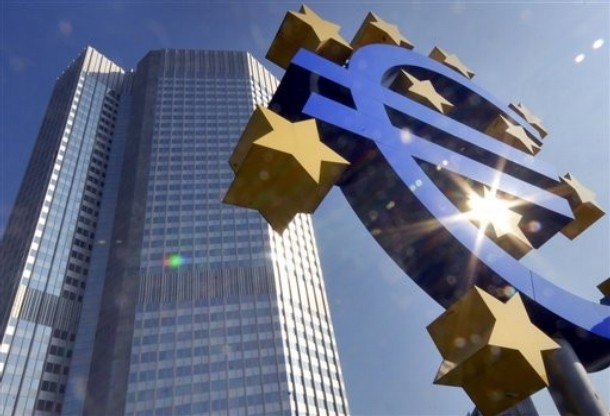
The European Central Bank (ECB) is responsible for managing the euro - the EU's single currency, and safeguarding price stability for the more than two-thirds of the EU's citizens who use the euro. The ECB is also responsible for framing and implementing the EU’s economic and monetary policy. The European Central Bank was set up in 1998.
Under Article 2 of the Treaty on European Union, the objectives of the Union are achieving a high level of employment and sustainable development.
The main tasks of the Bank are:
- is to define and implement the monetary policy of the euro area,
- portfolio management in the countries of the euro zone,
- promotion of the payment system.
The European Central Bank is based in Frankfurt.
The European Investment Bank
The European Investment Bank (EIB) was set up in 1958 by the Treaty of Rome as the long-term lending Bank of the European Union. The EIB lends money to the public and private sectors for projects of European interest. The task of the Bank is to contribute towards the integration, balanced development and economic and social cohesion of the EU Member States. It helps make businesses more competitive. The EIB is a non-profit, policy driven bank. It raises substantial volumes of funds on the capital markets which it lends on favourable terms to projects furthering EU policy objectives. The EIB continuously adapts its activity to developments in EU policies.
The EIB is owned by the Member States of the European Union. They subscribe jointly to its capital, each country’s contribution reflecting its economic weight within the Union. The EIB does not use any funds from the EU budget. Instead, it is self-financing, borrowing on the financial markets
The Bank’s decisions are taken by the following statutory bodies: the Board of Governors, the Board of Directors and the Management Committee.
The European Investment Bank is based in Luxembourg.
|
KEY DATES IN THE HISTORY OF EUROPEAN INTEGRATION
9 May 1950. The French Foreign Minister Robert Schumann submits a plan laying out a common market for coal and steel. The author of the plan is the head of the French General Planning Commission, Jean Monet. For this reason 9 May is now commemorated as Europe Day.
18 April 1951. Belgium, France, Italy, Luxembourg, Germany and the Netherlands sign the Treaty establishing the European Coal and Steel Community (ECSC). The Treaty of Paris comes into force on 23 July 1952.
27 March 1957. Belgium, France, Italy, Luxembourg, Germany and the Netherlands sign the Treaty establishing the European Economic Community (EEC) and the Treaty establishing the European Atomic Energy Community (EURATOM) – the Treaties of Rome come into force on 1 January 1958.
8 April 1965. The Member States sign the Merger Treaty, which establishes common executive bodies for all three communities. The Treaty comes into force on 1 July 1967. Since that date the European Community (EC) title is used.
6 July 1968. European Community Member States begin to trade without internal tariffs on imports. Uniform tariffs are put in place for third world countries.
24 April 1972. The European Exchange Rate Mechanism (ERM) begins to operate, which allows only marginal movement of exchange rates between the individual currencies of the Member States. This is the first step towards the introduction of a common European currency.
1 January 1973. The European Community expands by the accession of Denmark, Ireland and Great Britain.
1974 The European Council is established – the new institution of the European Community was set up by a communiqué following the 1974 Paris Summit. The European Council is a regular meeting of the Heads of State of the European Community Member States. The European Council was integrated into the body of primary EC legislation by the Single European Act (which encompasses all international Treaties signed by the Member States). The Treaty on the European Union defines the European Council as the body which determines the political direction of the EU.
7 through 10 June 1979. The first direct elections for the European Parliament are held.
1 January 1981. Greece joins the European Community.
14 June 1985. The Member States sign the Schengen Agreement, which foresees the abolition of internal border controls, the unification of asylum and visa policies and the establishment of the Schengen Information System (SIS). This main information system ensures access to important information for the police and customs authorities of individual Member States.
1 January 1986. Spain and Portugal join the European Community on.
17 February 1985. The Single European Act (SEA) is signed in Luxembourg (by nine Member States), and on 28 February in The Hague (by Denmark, Italy and Greece). This Treaty is the first significant revision of the founding Treaties of the Community. Its main goal is to establish a common internal market by the end of 1992.
1 July 1987. The Single European Act comes into force on.
1990. The first phase of the Economic and Monetary Union begins. The main goals are the liberalization of capital movement and the participation of all Member States in the Exchange Rate Mechanism (each currency has a set base exchange rate to ECU and this rate is consequently the base for mutual exchange rates between the currencies).
7 February 1992. In Maastricht, the Foreign Ministers and Finance Ministers of the EC Member States sign the Treaty on the European Union (EU). This is the second major revision of the founding Treaties of the Community. This Treaty introduces the term ‘European Union’, the three-pillar structure (the Maastricht Temple), the principle of subsidiarity (which ensures that decisions are taken as closely as possible to the citizen), the citizenship of the Union and the requirement to create the Economic and Monetary Union by the end of 1999.
1 November 1993. The Treaty on the European Union comes into force.
22 June 1993. The Copenhagen Criteria are set forth by the European Council, which define the conditions that must be met by any country seeking membership of the EU. These include the requirements for stability of institutions guaranteeing democracy, existence of a functioning market economy, and integration of the acquis communautaire (accumulating the laws and regulations which were adopted during the individual phases of integration of the community and creation of the single market) into the national legislation along with assuming the commitment arising from EU membership.
1 January 1994. The European Monetary Institute, which coordinates the introduction of a common European currency (the Euro), begins to function.
1995 Finland, Austria and Sweden join the EU.
2 October 1997. The Foreign Ministers of the EU Member States sign the Treaty of Amsterdam, which revises the Treaty on the European Union.
The European Commission unveils its Agenda 2000, which seeks to prepare the EU for further expansion. Agenda 2000 also contains the evaluation of the candidate countries prepared on the basis of the Copenhagen Criteria.
1 June 1997. The European Monetary Institute winds up its activities and its role is assumed by the European Central Bank, which begins to operate as the management centre for the monetary policies of the Eurozone countries.
1 January 1999 The common currency is introduced for cashless transfers.
1 May 1999. The Treaty of Amsterdam comes into force.
March 2000. At the meeting of the European Council in Lisbon, the Heads of the Member States launch a new strategy for the next decade (the Lisbon Strategy), which aims to invigorate the EU and by 2010 to make it the most dynamic and competitive economy in the world.
26 February 2001. The Foreign Ministers of the EU Member States sign the Treaty of Nice. This Treaty addresses the institutional reform of the EU after its expansion in 2004.
1 January 2002. The Euro becomes the legal tender in twelve EU Member States (Belgium, Finland, France, Italy, Ireland, the Netherlands, Luxembourg, Germany, Portugal, Austria, Greece and Spain).
February 2002 until June 2003. A summit on the future development of the EU is held. The summit results in the draft treaty establishing a constitution for Europe, which is announced on 20 June 2003 at the meeting of the European Council in Thessaloniki.
1 February 2003. The Treaty of Nice comes into force.
1 May 2004. The European Union is joined by the Czech Republic, Estonia, Cyprus, Lithuania, Latvia, Hungary, Malta, Poland, Slovenia and Slovakia.
29 October 2004. In Rome, the Heads of the EU Member States sign the Treaty on the Constitution for Europe.
2005 The ratification processes of the European Constitution begin in individual EU Member States, which is required for the treaty to come into force. Due to the results of the referendums in France and the Netherlands, where the treaty is turned down by the citizens, the treaty fails to be ratified.
1 January 2007. Bulgaria and Romania join the EU. Slovenia adopts the Euro as its currency.
13 December 2007. The Heads of the EU Member States sign the Lisbon Treaty. This Treaty aims to ensure that the EU can function effectively in the future, after the failure of the EU Constitution.
21 December 2007. The Schengen Area expands to include the Czech Republic, Estonia, Lithuania, Latvia, Hungary, Malta, Poland, Slovenia and Slovakia.
1 January 2008. The Euro becomes the currency of Cyprus and Malta.
Individual Member States begin the ratification process for the Lisbon Treaty.
12 June 2008. A referendum held in Ireland rejects the Treaty.
12 December 2008. Switzerland joins the Schengen area.
1 January 2009. Slovakia adopts the Euro as its currency.
4-7 June 2009. Elections for the Members of the European Parliament (2009-2014).
01.12.2009 the Lisbon Treaty entered into force.
01.12.2009 Herman Van Rompuy was elected as a President of the European Council.
1.01.2010 Spain takes over the rotating presidency of the Council of the European Union for the fourth time. It is the first country to hold the presidency under the Lisbon Treaty and the new ‘trio presidency system’
07.05.2010 Heads of State and Government within the euro area agree to deeper fiscal consolidation, stronger economic coordination and budgetary surveillance to defend the euro
17.06.2010 At a European Council meeting in Brussels, EU leaders adopt a 10-year strategy for smart, sustainable and inclusive growth: Europe 2020.
01.01.2011 Estonia adopts the euro as its currency, becoming the 17th member of the euro area. Three new European financial supervisory authorities begin operating: the European Banking Authority, the European Insurance and Occupational Pensions Authority and the European Securities and Markets Authority.
18.01.2011 The first "European semester" gets under way – a six-monthly cycle of economic policy coordination between EU countries which is meant to help prevent economic crises like the one in 2008 - 2010.
17.01.2012 The members of the European Parliament elected German Socialist Martin Schulz as President of the European Parliament.
02.03.2012 The European Council re-elects Herman Van Rumpuy as President of the European Council.
01.04.2012 The European Citizens' Initiative becomes a reality, enabling citizens to propose EU legislation on specific issues for the first time. One million citizens from at least one quarter of EU Member States can invite the European Commission to put forward proposals for legal acts in areas where it has the power to do so.
08.10.2012 The European Stability Mechanism (ESM) enters into force. It is the central part of the so-called 'firewall' aimed at ensuring financial stability in the euro area.
10.12.2012 The European Union is awarded the Nobel Peace Prize 2012 at a ceremony in Oslo.
01.01.2013 The Treaty on Stability, Coordination and Governance in the Economic and Monetary Union (popularly known as the 'fiscal compact') enters into force.
01.07. 2013 Croatia joins the EU, bringing the total number of member countries to 28. The EU now also has 24 official languages.
02.12.2013 The Council adopts the long-term EU budget for 2014-2020, the 'Multiannual Financial Framework'. This marks the end of two and a half years of negotiations and allows a new generation of EU spending programmes to be implemented as of 1 January 2014.
01.01 20142011 Latvia adopts the euro as its currency, becoming the 18th member of the euro area
|
EU Enlargement
In 1951 Belgium, France, Germany, Italy, Luxembourg and Netherlands established the European Cole and Steel Community.
Enlargement:
- 1973 Denmark, Ireland, Great Britain;
- 1981 Greece;
- 1986 Portugal and Spain;
- 1995 Austria, Finland and Sweden;
- 2004 Cyprus, Czech Republic, Estonia, Hungary, Latvia, Lithuania, Malta, Poland, Slovakia, Slovenia;
- 2007 Bulgaria and Romania;
- 01 July 2013 Croatia.
EU Presidencies until 2020
EU member states met on 13 December 2004 and reached political agreement on provisions concerning the exercise of the Council Presidency including the order of Presidencies from 2007 to 2020.
The future presidencies are to be run in groups of three, as foreseen by the new European Constitution, with each group generally containing a large and a small member state and at least one new member state.
The EU presidencies co-ordinate the work of the Union.
|
Germany |
January-June |
2007 |
|
Portugal |
July-December |
2007 |
|
Slovenia |
January-June |
2008 |
|
France |
July-December |
2008 |
|
Czech Republic |
January-June |
2009 |
|
Sweden |
July-December |
2009 |
|
Spain |
January-June |
2010 |
|
Belgium |
July-December |
2010 |
|
Hungary |
January-June |
2011 |
|
Poland |
July-December |
2011 |
|
Denmark |
January-June |
2012 |
|
Cyprus |
July-December |
2012 |
|
Ireland |
January-June |
2013 |
|
Lithuania |
July-December |
2013 |
|
Greece |
January-June |
2014 |
|
Italy |
July-December |
2014 |
|
Latvia |
January-June |
2015 |
|
Luxembourg |
July-December |
2015 |
|
Netherlands |
January-June |
2016 |
|
Slovakia |
July-December |
2016 |
|
Malta |
January-June |
2017 |
|
United Kingdom |
July-December |
2017 |
|
Estonia |
January-June |
2018 |
|
Bulgaria |
July-December |
2018 |
|
Austria |
January-June |
2019 |
|
Romania |
July-December |
2019 |
|
Finland |
January-June |
2020 | | |